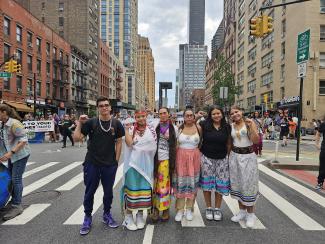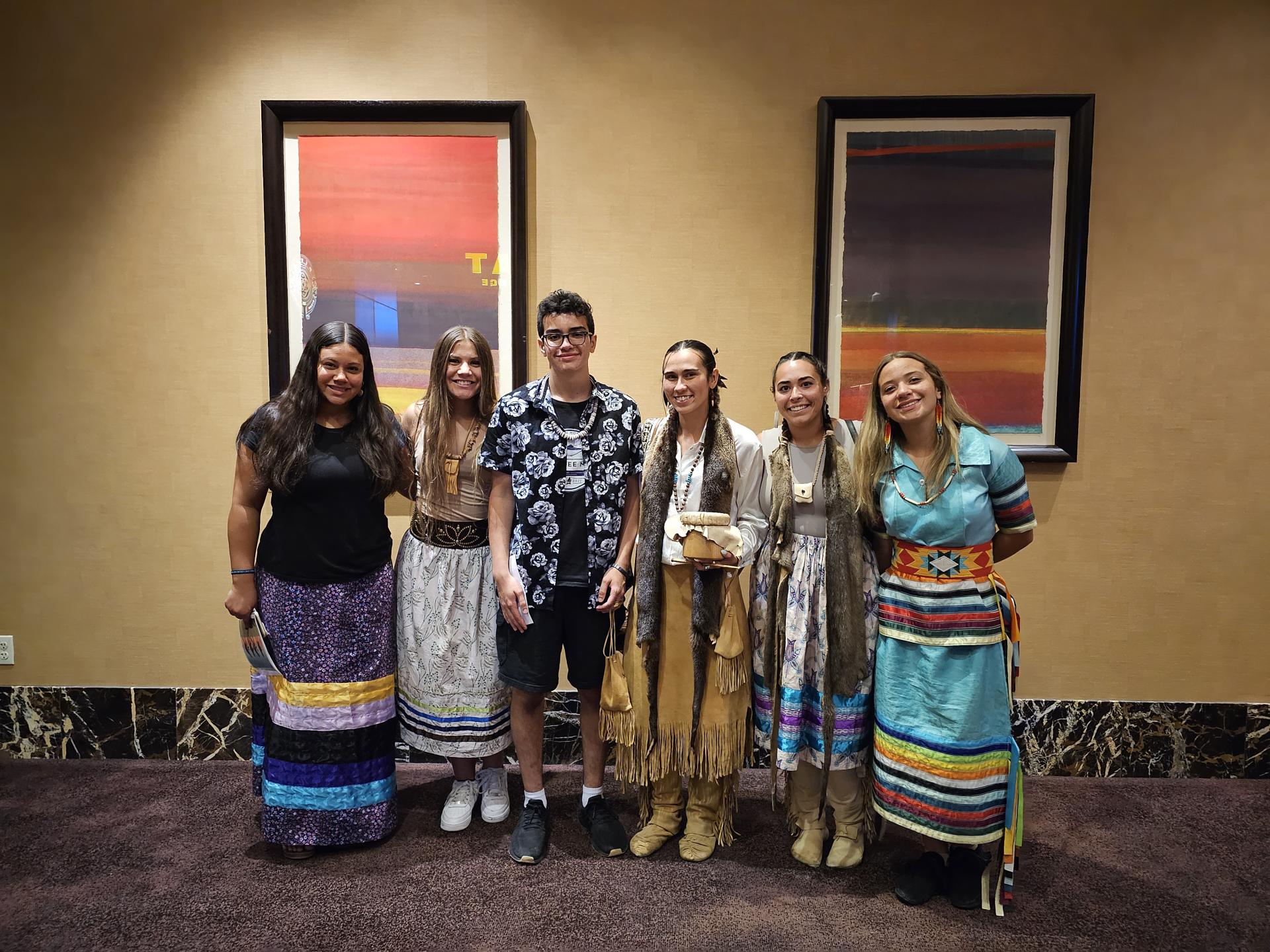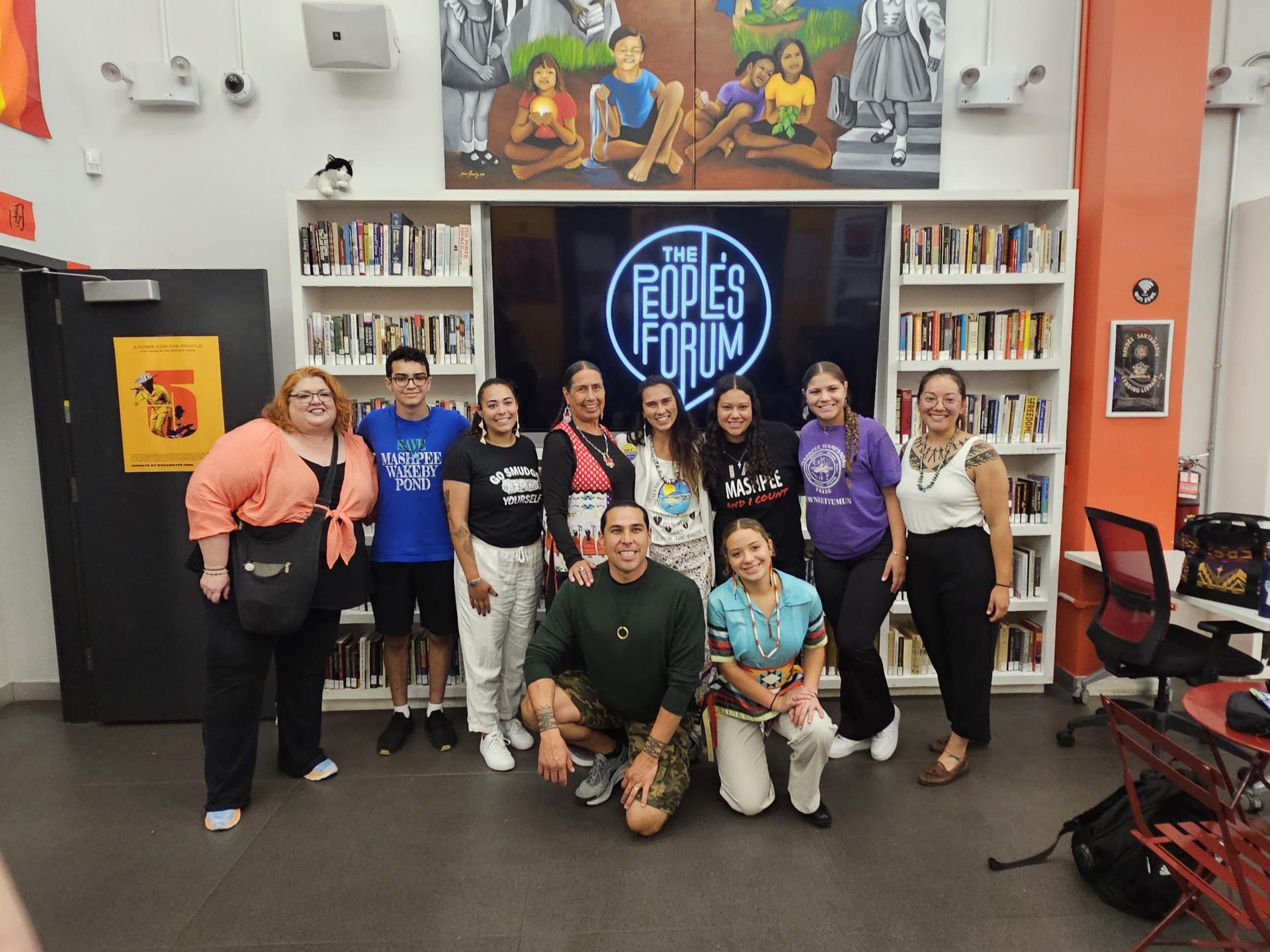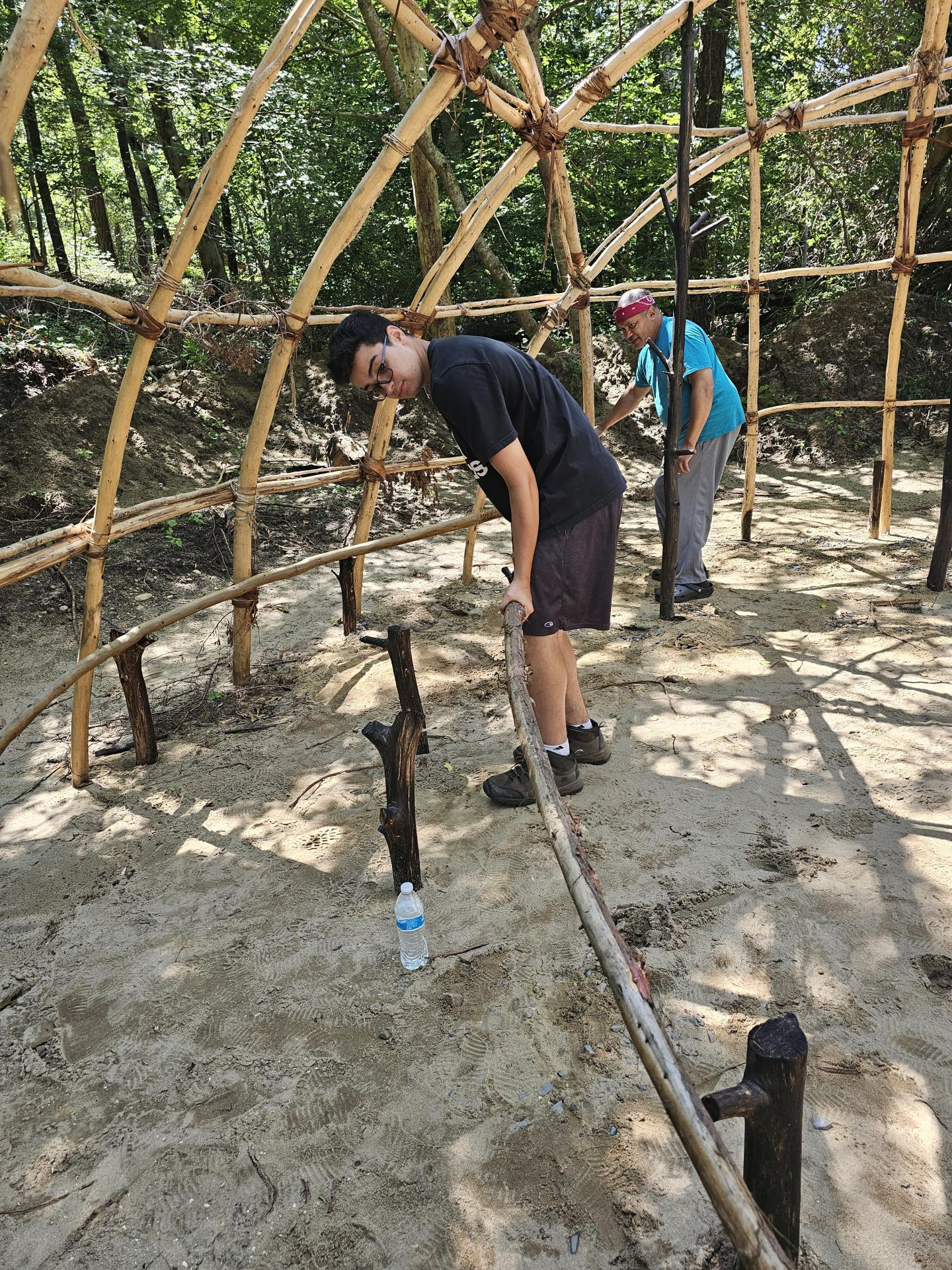
For Wampanoag, like many other New England, or Dawnland, Natives, herring are sacred. They bring with their springtime migration the return of life to the land after a long winter, paving the way for planting. They fill the stream with multitudes that in times gone by would be described as turning the rivers black. Early colonists wrote that “you could walk across the river on the backs of the fish.” The fish would reach the freshwater ponds at the tops of the river and spawn the next generation, which would swim out to the open Atlantic to one day return and continue the cycle of life, death, and renewal.
What will it look like, the world we leave to our children? Will we have drinkable water? An ocean with fish? Will “fire season” replace autumn? The youth will bear the burden of the procrastination, the apathy, the lies, and the greed that have fueled our society for far too long. For the youth, there is no other choice than renewal. For many Tribes, youth are encouraged to speak up and are regarded as important future leaders to listen to. They are often optimistic and uncorrupted. Teenagers tend to be idealistic and lean into the quest for solutions, the hope, the idea we should at least try. When adults maintain these qualities, it is called “radical optimism.”
In Mashpee, Native Environmental Ambassadors (NEA) are leading the way for the Mashpee Wampanoag Tribe in advocating for solutions. Described as “a group of Native youth who protect Native homelands from the effects of colonization,” or, alternatively, “a bunch of Mashpee Wamp kids protecting our homeland with Rights of Nature,” the group has so far been able to pass two Tribal resolutions in the Tribal Council. The first was a resolution declaring a state of emergency for the herring, whose populations have been in serious decline. In this resolution, the Tribe will act as the advocate for the herring and their rights. The second is a resolution to support enacting the Rights of Nature into the Tribal bylaws.
NEA member Amayah Balbuena, 15, is learning how to navigate policy and procedure. When I asked her how she got started with Rights of Nature work, she said, “We went to Washington, D.C. for a Tribal sovereignty summit, and one of the activities was to make posters about what our Tribe struggles with. And we saw that so many of us had the same struggles with our waters and polluters.” Fellow NEA member Isaiah Peters, 16, remembers learning from the Tlingit people in a cultural exchange in Alaska. “It was a real opportunity to learn what other people are doing with their herring runs and was inspiring to us for how we could rebuild ours,” he said.
Since the passing of the Tribal resolutions, NEA became the first youth-led organization doing Rights of Nature work on Turtle Island, according to Shannon Biggs of Movement Rights and the Global Alliance for Rights of Nature. Many environmental conferences and programs have invited them to speak locally in the New England area as well as at powwows and cultural events like the Namasket Herring Festival, InterTribal Paddle on the Charles, and the Indigenous Peoples Day celebration in Newton.

In September, the youth of NEA were asked to sit on a panel at the annual Bioneers conference, hosted by the Agua Caliente Tribe in California. With over 80 Tribes represented in the audience, this was the biggest spotlight they had seen so far. After the event, Balbuena said, “So many people came up to us saying what a good job that we are doing and how they are proud of us, and the support just felt absolutely amazing.” Peters commented, “We got to meet a lot of cool Native people and the work they are doing, and to see how much support there is for these kinds of ideas really boosted our morale.”
The youth of NEA are making many of us in the older generation of Mashpee proud, making our voices heard and our presence seen. They have met a who’s who of the Native environmentalism world, such as Pennie Opal from Plant of Movement Rights and Tom Goldtooth (Diné/Dakota Bdewakantonwan Hunka) of the Indigenous Environmental Network, each of whom has dedicated their lives to working for Indigenous Peoples and the environment. Balbuena recalls meeting Goldtooth and “learning how they worked to change things for the next generation like us.” They also met Casey Camp-Horeneck (Ponca), whom they excitedly recognized as “The Grandma from Rez Dogs!”

Native Environmental Ambassadors meeting with Dallas Goldtooth and Casey Camp-Horeneck in NYC.
NEA has also done work with their peers from Houma, Louisiana, the Alaskan Yukon, and Hawai’i. Together they have learned about Tribal law and the resolution process, and also each other’s cultures. Peters recalls how much he liked the “Bird Songs,” a distinct style of singing, from southern California Tribes. For Balbuena, the most memorable exchange was learning lei-making from the Hawaiians.
The youth of NEA are also learning about their culture and our traditional stewardship of the environment through programming with the Mashpee Tribes Education Department. The property of Maushop Farm abuts the Santuit River, and NEA youth have worked to clean up this stretch of the river while learning to identify plants on the property that have cultural uses, as well as the wildlife and its habitats. In cultivating cattail reeds, for example, they learn about how these plants help to clean the water, and can also be used as a source of food as well as a material for weaving waterproof mats for roofing of our traditional houses. On the farmland, they have worked with Tribal member Danielle Hill to grow and cultivate our ancestral corn variety, King Philip’s Corn, a seven-row, red flint corn varietal, which is uniquely suited to the environment after generations of adaptation. They also have started to practice traditional methods of encouraging wild growth through selective clearing.

Learning traditional skills by building a wetu.
The other project happening on the property is the construction of a traditional contact period homesite, led by Tribal member Darius Coombs. The small home and accompanying shade arbor are being built with local materials harvested from Tribal lands. When I asked Peters how this activity was connected to environmental work, he talked about harvesting and processing materials for a home. “We get to be there hands-on with the resources and see where it comes from, and what we have to protect; it gives us more connection to it,” he explained. Balbuena echoed the sentiment, saying, “It gives us the background understanding to know why what we are doing is important.”
As herring move up river they eventually reach Mashpee Pond, the body of water that defines our community as Mashpee People. For the past four years, the pond has closed earlier and earlier due to the buildup of cyanobacteria. Recently, NEA helped work to pass a proposal in the Mashpee town government to permit a full cultural homesite museum on the property, referred to as 12 Acres, which sits on Mashpee Pond. The town approval for this Land Back action will fulfill the promise of the 12 Acres property, which was the designated site of a museum as far back as the 1970s. Having a cultural museum on the shores of Mashpee Pond will create a powerful space to discuss the impacts of our lives on the herring and our overall ecosystem.
When I asked Peters about the future, he said that he sees “more hard work, a lot to learn, and a lot of info to spread.” But, he added optimistically, “We have time. We’re young.” Balbeuna articulated a more specific set of goals: “We need to get the state to rebuild the herring runs, we need to stop building so close to the water, we need to stop allowing boats to come and rinse the salt water from the ocean. I don’t think people understand the harm that they are doing.”
These youth are taking concrete actions. We should let them lead with their radical optimism. It is, after all, their future. We should follow our youth, and the herring, to renewal.
--Hartman Deetz (Mashpee Wampanoag) has been active in environmental and cultural stewardship for over 20 years.
He is currently a 2023–2024 Cultural Survival Writer in Residence.
Top photo: Native Environmental Ambassadors in New York City.
